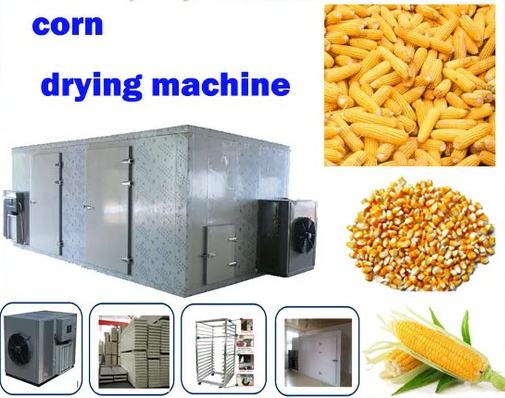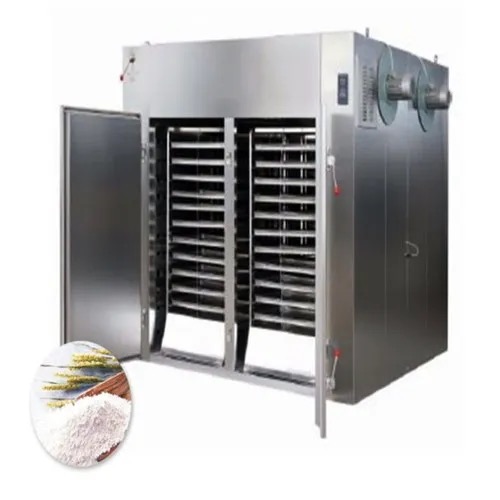
Content Menu
● Understanding Heat Pump Dryers
● How Does a Dryer Heat Pump Work?
● Efficiency Comparison
● Advantages of Heat Pump Dryers
● Applications in Food Processing
● Challenges
● Future Trends in Heat Pump Drying Technology
● Conclusion
● FAQ
>> 1. What is a heat pump dryer?
>> 2. How does a dryer heat pump work?
>> 3. Are heat pump dryers worth the investment?
>> 4. Can I use a heat pump dryer for all types of food?
>> 5. How much energy do heat pump dryers save compared to traditional dryers?
● Citations:
In the world of food processing, drying is a crucial step that affects the quality, shelf life, and safety of products. As a manufacturer of food dryers in China, understanding the efficiency of heat pump dryers compared to traditional drying methods is essential for providing optimal solutions to our clients. This article explores the mechanisms, advantages, and applications of heat pump dryers in food processing while also addressing common questions about their efficiency.

Understanding Heat Pump Dryers
Heat pump dryers utilize a unique technology that sets them apart from traditional dryers. Unlike conventional dryers that generate heat continuously to evaporate moisture, heat pump dryers recycle air within a closed-loop system. This process involves several key components:
- Compressor: Pressurizes the refrigerant, raising its temperature.
- Evaporator: Absorbs heat from the air inside the dryer to evaporate moisture from the food.
- Condenser: Releases heat back into the drying chamber after the refrigerant has condensed.
- Expansion Valve: Regulates the flow of refrigerant, allowing it to expand and cool before entering the evaporator again.
This cycle allows heat pump dryers to operate at lower temperatures while maintaining high efficiency.
How Does a Dryer Heat Pump Work?
To further understand how heat pump dryers function, it is important to delve into their operational mechanics. The process begins when warm air is drawn from the drying chamber into the evaporator. Here, the refrigerant absorbs this heat and evaporates, turning from liquid into gas. The compressor then compresses this gas, increasing its temperature significantly.
Next, this high-temperature gas flows into the condenser, where it releases its heat back into the drying chamber. As it cools down, it condenses back into a liquid state and returns to the expansion valve. This cycle repeats continuously, allowing for efficient moisture removal without excessive energy consumption.
Efficiency Comparison
When comparing heat pump dryers with traditional drying methods, several factors come into play:
| Feature | Heat Pump Dryers | Traditional Dryers |
| Energy Consumption | 40-50% less energy use | Higher energy consumption |
| Drying Temperature | Operates at 50°C (122°F) | Can reach up to 70-75°C (158-167°F) |
| Drying Time | Longer drying cycles | Faster drying times |
| Moisture Control | Excellent moisture retention | Less control over moisture levels |
| Environmental Impact | Lower CO2 emissions | Higher emissions due to energy use |
Heat pump dryers are approximately 28% more efficient than traditional electric or gas dryers due to their ability to recycle hot air and utilize lower temperatures for drying. This not only translates into energy savings but also results in gentler treatment of food products, preserving their nutritional value and color better than high-temperature methods.
Advantages of Heat Pump Dryers
1. Energy Efficiency: The most significant advantage is their energy efficiency. Heat pump dryers can save up to 50% on energy costs compared to conventional dryers. This is particularly beneficial for food manufacturers looking to reduce operational costs.
2. Gentler Drying Process: Operating at lower temperatures means that heat pump dryers are less likely to damage delicate food items. This is crucial for preserving flavors and nutritional content in fruits and vegetables.
3. Versatility in Installation: Heat pump dryers do not require venting, allowing for flexible installation options in various settings, including small spaces where traditional dryers may not fit.
4. Reduced Environmental Impact: By consuming less energy and producing fewer greenhouse gases, heat pump dryers are an environmentally friendly option for food processing facilities.
5. Improved Indoor Air Quality: Since they do not exhaust hot air outside, heat pump dryers help maintain better indoor air quality by preventing the release of pollutants associated with combustion processes.
6. Consistent Drying Performance: Heat pump technology allows for consistent drying performance across different batches of products, ensuring uniformity in moisture content which is essential for product quality.
7. Low Operating Noise Levels: Compared to traditional dryers that can be quite noisy during operation, heat pump dryers generally operate at lower noise levels, making them suitable for environments where noise reduction is important.
8. Automation and Smart Technology Integration: Many modern heat pump dryers come equipped with advanced controls and smart technology features that allow for automated drying cycles and real-time monitoring of humidity levels, enhancing operational efficiency.

Applications in Food Processing
Heat pump drying technology is increasingly being adopted across various sectors of food processing:
- Fruits and Vegetables: Ideal for dehydrating fruits and vegetables while maintaining their color and nutrients. For example, apple slices dried using a heat pump dryer retain their vibrant color and crisp texture compared to those dried using traditional methods.
- Herbs and Spices: Gentle drying preserves volatile oils that contribute to flavor. Basil and oregano dried in a heat pump dryer have been found to retain more aroma compared to those subjected to higher temperatures.
- Meat Products: Effective in producing jerky or dried meats without compromising safety. The controlled environment reduces the risk of bacterial growth during the drying process.
- Grains and Nuts: Helps in removing moisture efficiently without overheating; this is particularly important for nuts which can become rancid if exposed to high temperatures during drying.
- Dairy Products: Heat pump technology can also be utilized for drying dairy products like cheese powder or whey protein without denaturing sensitive proteins.
Challenges
Despite their advantages, there are some challenges associated with heat pump dryers:
- Higher Initial Cost: The upfront investment for heat pump technology can be higher than traditional systems. However, this cost is often offset by long-term savings on energy bills.
- Longer Drying Times: While they are more efficient overall, the drying process can take longer compared to traditional methods. This may not be suitable for all operations where time is critical.
- Maintenance Requirements: Heat pump systems may require more regular maintenance due to their complexity compared to simpler traditional systems. Ensuring proper maintenance is essential for optimal performance.
- Sensitivity to Ambient Conditions: The efficiency of heat pump dryers can be affected by ambient temperature and humidity levels; therefore, they may not perform as well in extremely cold or humid conditions without proper adjustments or enhancements.
Future Trends in Heat Pump Drying Technology
The future of heat pump dryer technology looks promising as advancements continue to emerge:
1. Integration with Renewable Energy Sources: There is an increasing trend towards integrating heat pump systems with solar panels or wind turbines to further reduce energy costs and carbon footprints.
2. Enhanced Control Systems: Future models are expected to feature even more sophisticated control algorithms that optimize drying cycles based on real-time data analytics from sensors monitoring temperature and humidity levels.
3. Modular Designs: Manufacturers are exploring modular designs that allow units to be scaled up or down based on production needs without significant redesigns or additional investment.
4. Research on New Materials: Ongoing research into new materials for insulation and components may lead to even greater efficiencies and reduced operating costs over time.
5. Broader Acceptance Across Industries: As awareness grows regarding the benefits of energy-efficient technologies, more industries beyond food processing may adopt heat pump technology for various applications including textiles and pharmaceuticals.
Conclusion
Heat pump dryers represent a significant advancement in drying technology for food processing. Their efficiency, gentleness on products, and environmental benefits make them an attractive option for manufacturers looking to enhance their operations. While they may require a higher initial investment and longer drying times, the long-term savings and product quality improvements often justify this choice. As technology continues to evolve, we can expect even greater efficiencies and applications for heat pump dryers in various industries.

FAQ
1. What is a heat pump dryer?
A heat pump dryer is an appliance that uses a refrigeration cycle to dry clothes or food items by recycling air within a closed system instead of venting it outside.
2. How does a dryer heat pump work?
A dryer heat pump works by compressing refrigerant gas which absorbs heat from the air inside the dryer. This heated air then evaporates moisture from the items being dried before being cooled down and recycled back into the system.
3. Are heat pump dryers worth the investment?
Yes, while they have a higher upfront cost, heat pump dryers save money on energy bills over time and provide better product quality due to their gentle drying process.
4. Can I use a heat pump dryer for all types of food?
Yes, heat pump dryers are versatile and can be used for various types of food including fruits, vegetables, herbs, meats, grains, and nuts.
5. How much energy do heat pump dryers save compared to traditional dryers?
Heat pump dryers can save up to 50% on energy costs compared to traditional electric or gas dryers due to their efficient recycling of hot air.
Citations:
[1] https://elephantenergy.com/heat-pump-dryer-vs-electric-dryer-whats-right-for-you/
[2] https://www.beko.co.uk/support/faqs/tumble-dryers/differences-between-heat-pump-and-condenser-dryer
[3] https://www.hstarschiller.com/comparison-of-heat-pump-drying-technology-and-traditional-drying-technology_n47
[4] https://www.istockphoto.com/photos/fruit-dryer
[5] https://www.youtube.com/watch?v=9DSGcVhjHEc
[6] https://www.youtube.com/watch?v=DeN-h6opueM
[7] https://acespace.org/blog/2023/04/06/save-on-an-electric-heat-pump-dryer/
[8] https://www.familyhandyman.com/article/heat-pump-dryer/
[9] https://onlinelibrary.wiley.com/doi/full/10.1002/ese3.1326
[10] https://www.freepik.com/free-photos-vectors/food-dryer
[11] https://www.youtube.com/watch?v=mtDzdYoyeR8











